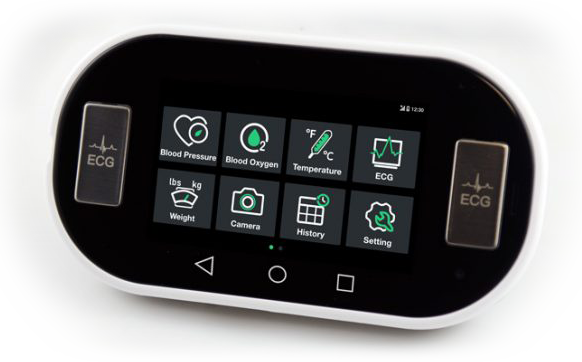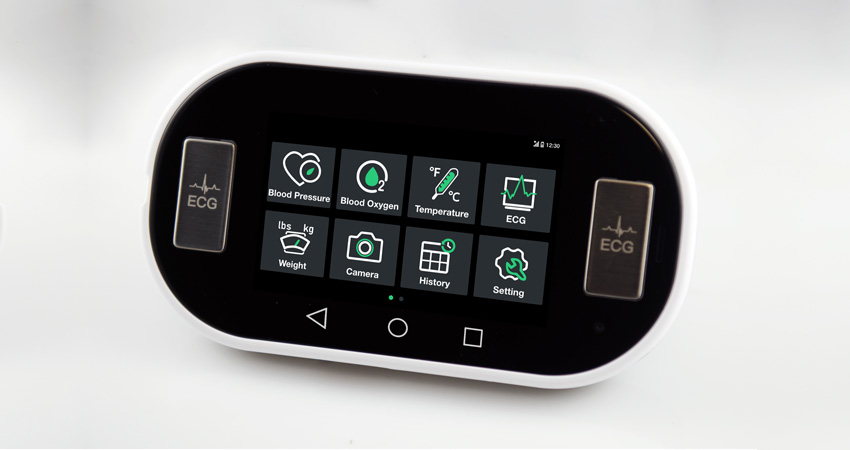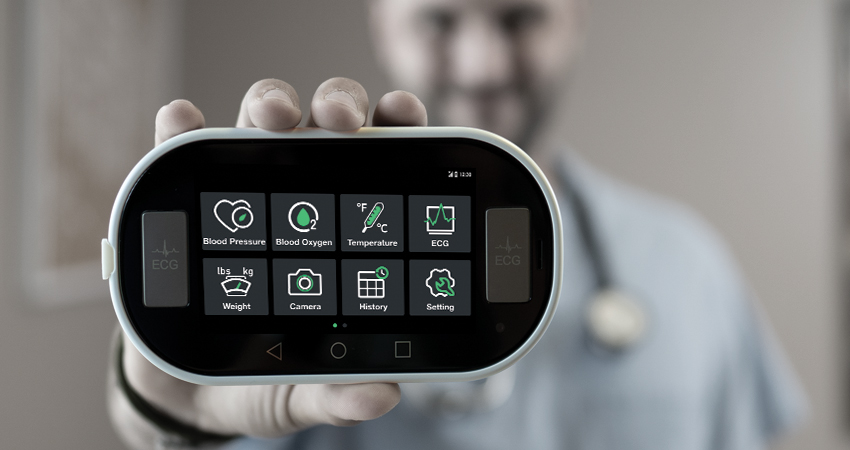
It’s taken years to design and test, but the Vitals360 is on its way. It’s a cell phone-size monitor that makes telehealth easier for patients and their physicians.
Steve Peabody, of Indiana, is the chief innovation officer of VoCare, Incorporated, the company behind Vitals360. He learned recently the Food and Drug Administration cleared the device for approval.
“What it does, it measures all your vitals that are required to do remote patient monitoring,” explained Peabody. “It’s also a cell phone. It sends information to the cloud, and doctors can download the monitor remotely.”
The Vitals360 measures blood pressure, glucose, oxygen saturation, temperature, pulse and can even perform EKG duties. Like a cell phone, icons prompt and point the patient how to do an oxygen saturation level, for instance. It’s not complicated and intended for folks who may not be technically savvy.
It’s been tested and refined with the help of the U.S. Department of Defense, the Army, Navy and Marines.
“Each one of these organizations has this device already,” said Peabody. “We did clinical studies and several other safety studies. So it took a year and a half to do those studies, and took us about six months to get it through the FDA.
“It’s one simple device that does all your vitals and sends it to your doctor, and it allows you to do telehealth visits.”
One of the investors in the Vitals360 is Dr. Ben Park, a medical doctor, computer scientist and one-time executive with Anthem and UnitedHealthcare.
Although doctors will be the first to purchase the Vitals360, insurance companies will be sought as well.
“They’re going to want to see an improvement in quality and a reduction in cost. If you can demonstrate those two things, they are all in,” said Dr. Park
The Vitals360 is set to make telehealth what it can truly be: an economical way to monitor patients with numerous chronic conditions.
“If you look at the people who spend the money, 14% of the patients have six or more chronic conditions, and they are responsible for half of all Medicare spending,” said Dr. Park. “A lot of that spending is for unnecessary hospital stays related to complications that were potentially avoidable.”
The device is intended to catch complications early before patients are hospitalized. Because it doubles as a telehealth device, doctors can have an office visit the same day, find the problem and adjust medications. The hope is this will prevent patients from going to the hospital.
The Vitals360, with all of it’s measuring and monitoring abilities, makes the telehealth visit a lot more like an office visit.



